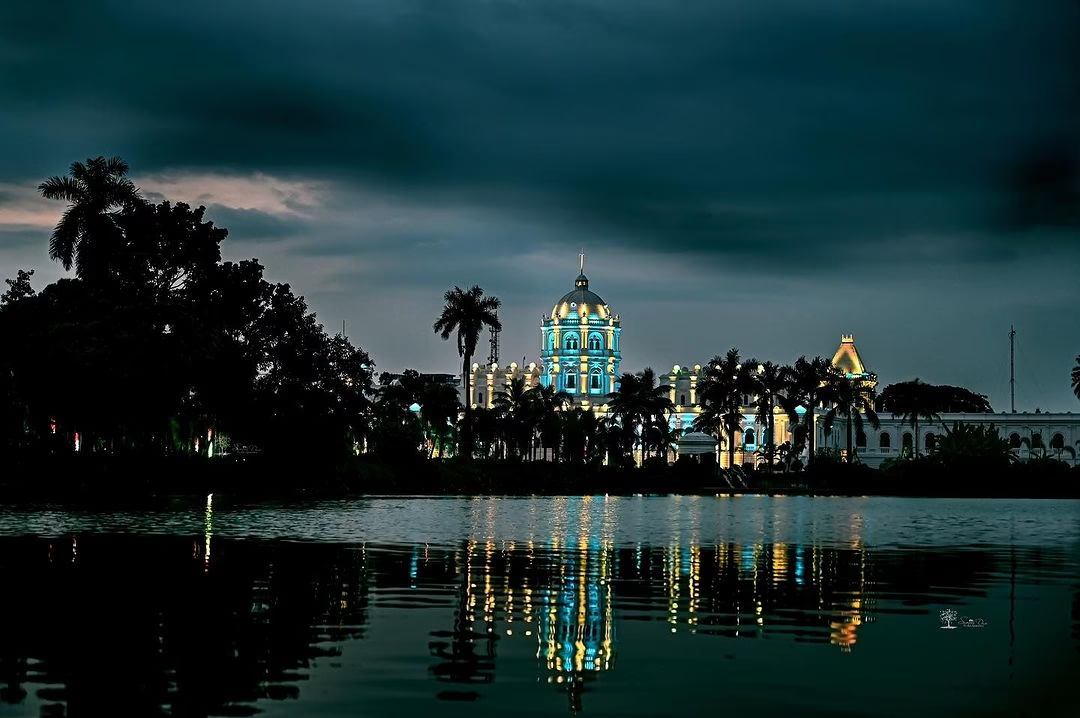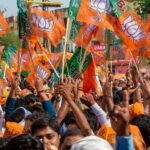Exploring the Charms of Tripura: A Land of Culture, History, and Natural Beauty
Introduction
Nestled in the northeastern part of India, the state of Tripura is a hidden gem waiting to be discovered. While it may not be as famous as some of its neighboring states, such as Assam or Meghalaya, Tripura boasts a unique blend of culture, history, and natural beauty that makes it a compelling destination for travelers and a source of pride for its residents. In this article, we will delve into the reasons why Tripura is famous and why it deserves more recognition on the Indian tourism map.

- Rich Cultural Heritage
One of the most compelling aspects of Tripura is its rich and diverse cultural heritage. The state is home to a mix of indigenous tribal communities, including the Tripuri, Jamatia, Chakma, and many others. Each community has its own unique traditions, languages, and customs, contributing to the vibrant tapestry of Tripura’s culture.
The Tripuri people, the largest ethnic group in the state, celebrate various festivals with great enthusiasm. Among these, the most famous is Kharchi Puja, an annual event held at the Kharchi Hill Range in Agartala, where idols of deities are worshipped in a grand procession. Additionally, the state is known for its traditional dance forms, such as the Garia and Hojagiri dances, which are performed on special occasions and festivals.
- Historical Landmarks
Tripura boasts a rich history that is reflected in its historical landmarks. The capital city of Agartala, for example, is home to the Ujjayanta Palace, a magnificent architectural marvel that was once the royal residence of the Manikya dynasty. Today, it houses the Tripura State Museum, showcasing artifacts, sculptures, and historical relics.
Another notable historical site is the Neermahal (Water Palace), located in the middle of the Rudrasagar Lake. This palace was built by the royal family of Tripura and is a symbol of their opulence and architectural prowess. Tourists can take boat rides to explore this stunning palace and its surroundings.
- atural Beauty
Tripura is blessed with lush green landscapes, rolling hills, and dense forests. The state’s natural beauty is a testament to its ecological diversity. The Jampui Hills, located in the northern part of Tripura, offer breathtaking views and are known for their cool climate and orange orchards. Birdwatchers will also find delight in the Sipahijala Wildlife Sanctuary, where numerous avian species thrive.
One of the most famous natural attractions in Tripura is the Unakoti Rock Cut Carvings. This archaeological site features thousands of rock-cut sculptures and carvings, making it a must-visit for history and art enthusiasts.
- Unique Cuisine
Tripura’s cuisine is a delightful fusion of flavors influenced by its various communities. Rice is the staple food, and dishes are often characterized by their use of bamboo shoots, fish, and pork. Traditional dishes like Mui Borok (a fermented fish dish) and Wahan Mosdeng (bamboo shoot salad) offer a unique culinary experience for visitors.
- Warm Hospitality
The people of Tripura are known for their warm and hospitable nature. Travelers can immerse themselves in the local culture by staying in homestays or participating in cultural events and festivals, where they will be welcomed with open arms.
Conclusion
In conclusion, Tripura may not be as famous as some of India’s more prominent states, but it has much to offer to travelers seeking a unique and culturally rich experience. Its rich cultural heritage, historical landmarks, natural beauty, and delicious cuisine make it a destination worth exploring. As more people discover the charms of Tripura, it is likely to gain the recognition and appreciation it truly deserves on the tourism map of India.
The history of Tripura, a state located in the northeastern part of India, is a fascinating tale of dynasties, cultural diversity, and socio-political developments. Here, we’ll provide an overview of Tripura’s history, highlighting key periods and events:
- Ancient Period:
- Early history: The earliest known history of Tripura dates back to the Mahabharata era, where it was mentioned as “Tripura Kingdom.” It was believed to be ruled by the Kiratas, an indigenous tribal group.
- Influence of Hinduism: Over time, Hinduism spread to the region, and various dynasties, including the Manikya dynasty, started ruling Tripura.
- Influence of Buddhism: Buddhism also had a presence in Tripura, as evidenced by archaeological remains like the Unakoti Rock Cut Carvings, which depict both Hindu and Buddhist figures.
- Medieval Period:
- The Manikya dynasty: The Manikya dynasty played a significant role in shaping Tripura’s history. Maharaja Dhanya Manikya (c. 15th century) is credited with strengthening and expanding the kingdom.
- Mughal and Maratha Invasions: Tripura faced invasions and conflicts with Mughal and Maratha forces during this period.
- Colonial Era:
- British influence: Tripura became a princely state under British suzerainty in the 19th century. The British Raj had a significant impact on the state’s administration, economy, and culture.
- Integration into British India: Tripura was briefly part of British-administered Bengal before being made a separate administrative entity under the direct control of the British Crown.
- Post-Independence:
- Integration into India: After India gained independence in 1947, the princely state of Tripura acceded to the newly formed Indian Union on October 15, 1949.
- Tribal unrest: Tripura witnessed tribal unrest in the post-independence period as indigenous tribes sought recognition and autonomy.
- Formation of the state: Tripura became a full-fledged union territory on November 1, 1956, and later, on January 21, 1972, it attained statehood.
- Modern Period:
- Political developments: Tripura’s political landscape has seen various shifts, with different parties and alliances coming to power over the years. The state has had its share of political and ethnic tensions.
- Socio-economic progress: In recent decades, Tripura has made significant progress in terms of infrastructure development, education, and healthcare.
- Cultural Heritage:
- Tripura’s cultural heritage is rich and diverse, with influences from Hinduism, Buddhism, and indigenous tribal traditions.
- Festivals like Kharchi Puja, Garia Puja, and Durga Puja hold special significance in the state and showcase its cultural diversity.
- Natural Beauty:
- Tripura’s lush green landscapes, hills, lakes, and wildlife sanctuaries have made it an emerging tourist destination, attracting nature enthusiasts and adventure seekers.
- Tripura’s history is a reflection of its dynamic past, blending indigenous traditions with external influences. Today, the state continues to evolve, preserving its cultural heritage while embracing the opportunities and challenges of the modern era.
In Tripura, several palaces hold historical and architectural significance, both old and new. These palaces offer a glimpse into the state’s rich history and cultural heritage. Here, we’ll explore some of the notable palaces in Tripura:
- Ujjayanta Palace (New Palace):
- Location: Agartala, the capital city of Tripura.
- History: Ujjayanta Palace, also known as the “Tripura State Museum,” is a majestic palace built during the reign of Maharaja Radha Kishore Manikya in 1901. The palace served as the royal residence of the Manikya dynasty until the princely state’s merger with India in 1949.
- Architecture: The palace is a fine example of Indo-Saracenic architecture, with a blend of Mughal, Rajput, and European architectural styles. It features beautiful gardens, large halls, and exquisite interiors.
- Current Use: Today, Ujjayanta Palace houses the Tripura State Museum, where visitors can explore a wide range of artifacts, historical documents, sculptures, and art collections that depict the state’s history and culture.2
- Neermahal (Water Palace):
- Location: Neermahal is located in the middle of Rudrasagar Lake, near the town of Melaghar in West Tripura district.
- History: Built by Maharaja Bir Bikram Kishore Debbarman in 1930, Neermahal is often referred to as the “Lake Palace of Tripura.” It was used as a summer residence by the royal family.
- Architecture: Neermahal combines Hindu and Islamic architectural styles and stands on 9.5 acres of land amid the lake. It is known for its picturesque setting and serene surroundings.
- Current Use: Neermahal is now a popular tourist attraction, and visitors can reach it by boat. The palace offers a glimpse into the opulent lifestyle of the Tripura royalty.
- 3.Kunjaban Palace (Old Palace):
- Location: Kunjaban Palace is situated atop a hill in Agartala.
- History: Kunjaban Palace was constructed in 1917 during the reign of Maharaja Birendra Kishore Manikya Bahadur. It served as a royal retreat.
- Current Use: The palace is now the Raj Bhavan (Governor’s Residence) of Tripura and is not open to the public. However, the surrounding areas, including the lush gardens and viewpoints, are accessible to visitors and offer panoramic views of Agartala.
These palaces, both old and new, are not only architectural marvels but also integral parts of Tripura’s cultural and historical heritage. They provide insights into the opulent lifestyles of the royalty and the artistic achievements of the region. Visitors to Tripura have the opportunity to explore these palaces and appreciate their historical and cultural significance.
Tripura’s culture is a vibrant tapestry woven from the traditions, customs, and practices of its diverse ethnic and tribal communities, as well as the influence of Hinduism, which has a strong presence in the region. Here are some key aspects of Tripura’s rich and diverse culture:
- Tribal Diversity: Tripura is home to various indigenous tribal communities, each with its unique culture and traditions. Some of the prominent tribal groups in the state include the Tripuri, Jamatia, Chakma, Halam, Munda, and Reang. Each community has its distinct languages, festivals, dances, and customs, contributing to the cultural mosaic of Tripura.
- Festivals: Festivals play a central role in Tripura’s cultural life. The most significant festival is Kharchi Puja, a week-long celebration held at the Kharchi Hill Range in Agartala. During this festival, idols of fourteen deities are worshiped in a grand procession. Other important festivals include Garia Puja, Ker Puja, and Durga Puja, which are celebrated with great fervor and enthusiasm.
- Traditional Attire: Traditional attire varies among different tribal communities. For instance, the Tripuri women often wear ‘Rignai’ (a type of Mekhla) and ‘Rikutu’ (blouse), while men wear ‘Risha’ (a type of turban) and ‘Rikutu’ (loincloth). The Chakma people have their distinct clothing, with women wearing ‘Pinon’ and ‘Phinon’ and men wearing ‘Phinon’ and ‘Galee.’
- Music and Dance: Tripura’s traditional music and dance forms are a significant part of its cultural heritage. The Garia and Hojagiri dances are popular traditional dances performed on various occasions, including festivals and social gatherings. These dances are characterized by graceful movements and colorful costumes.
- Cuisine: Tripura’s cuisine is influenced by its tribal communities and their culinary traditions. Rice is the staple food, and dishes often feature bamboo shoots, fish, pork, and local herbs. Notable dishes include Mui Borok (fermented fish), Wahan Mosdeng (bamboo shoot salad), and Mui Borok (fermented fish chutney).
- Arts and Crafts: Tripura has a rich tradition of arts and crafts. The state is known for its bamboo and cane products, such as baskets, mats, and furniture. Handwoven textiles, pottery, and woodcarving are also part of the local craft heritage.
- Language: Bengali and Kokborok are the main languages spoken in Tripura. Kokborok is the native language of the indigenous Tripuri people and is an important aspect of their cultural identity.
- Religious Diversity: While Hinduism is the predominant religion in Tripura, there is also a significant Buddhist and Christian minority, especially among the Chakma and Mizo communities. This religious diversity adds to the cultural tapestry of the state.
- Hospitality: Tripura is known for its warm and hospitable people. Visitors often find themselves welcomed with open arms, and the state’s residents take pride in sharing their culture and traditions with guests.
In summary, Tripura’s culture is a blend of indigenous tribal traditions, Hindu influences, and its unique geographical location in the northeastern part of India. This rich cultural diversity makes Tripura a captivating destination for those interested in exploring the cultural heritage of India’s northeastern states.
Tripura is a linguistically diverse state in northeastern India, and several languages are spoken by its residents. The linguistic landscape of Tripura reflects the ethnic diversity of its population, with different communities having their languages. Here are some of the primary languages spoken in Tripura:
- Bengali: Bengali is the most widely spoken language in Tripura and serves as the official language of the state. It is the mother tongue of a significant portion of the population, particularly in urban areas and among non-tribal communities.
- Kokborok: Kokborok is the native language of the Tripuri people, who are one of the major tribal communities in Tripura. It is recognized as an official language of the state. Kokborok is also known as “Twipra” and is used in various aspects of Tripuri culture, including literature and folk songs.
- Chakma: The Chakma community, primarily residing in the Chittagong Hill Tracts of Tripura, speaks the Chakma language. It is a Tibeto-Burman language and is written in the Chakma script. Chakma is also spoken by Chakma communities in neighboring regions.
- Mizo: The Mizo language, also known as Lushai, is spoken by the Mizo tribal community in parts of Tripura, especially in areas bordering Mizoram. It is an important language among the Mizo people and has its script.
- Reang: The Reang community, also known as Bru, has its language, which is part of the Tibeto-Burman language family. The Reang language is primarily spoken by this ethnic group in Tripura.
- Halam: The Halam language is spoken by the Halam tribal community in the state. It is also a Tibeto-Burman language and is part of Tripura’s linguistic diversity.
- Manipuri: Manipuri, also known as Meiteilon, is spoken by the Manipuri community in Tripura, particularly in the Jirania subdivision. Manipuri is also spoken in the neighboring state of Manipur.
- Bhutia: The Bhutia language, spoken by the Bhutia community, is of Tibetan origin. This community is primarily concentrated in the Sipahijala district of Tripura.
- **Mog: **Mog is spoken by the Mog community in Tripura, particularly in the South Tripura district. It is another language that contributes to the linguistic diversity of the state.
- English: English is used for official and administrative purposes in Tripura and is taught in schools and educational institutions.
It’s important to note that while Bengali is the most widely spoken language in the state and serves as the lingua franca for communication, the indigenous languages and dialects of the various tribal communities hold significant cultural and historical importance. Efforts are being made to preserve and promote these languages to ensure their continued existence and cultural significance in Tripura.
Tripura University is a central university located in the state of Tripura in northeastern India. Established on October 2, 1987, it is one of the prominent educational institutions in the region and plays a vital role in providing higher education and research opportunities to students from Tripura and beyond. Here are some key aspects of Tripura University:
- Location: Tripura University is situated in Suryamaninagar, a suburb of Agartala, the capital city of Tripura. The campus is spread over a sprawling area, providing a conducive environment for learning and research.
- History: The university was established through an Act of the Indian Parliament to meet the educational needs of the people of Tripura and the surrounding areas. It was originally set up as a state university and later granted central university status in 2007, which expanded its scope and funding.
- Academic Departments: Tripura University offers a wide range of academic programs through its various departments and schools. These programs encompass fields such as arts, science, commerce, social sciences, management, and more. The university has undergraduate, postgraduate, and doctoral programs.
- Research and Innovation: The university places a strong emphasis on research and innovation. It has research centers and facilities for various disciplines, encouraging faculty and students to engage in research activities. Research projects, publications, and conferences are integral to the academic environment.
- Libraries: Tripura University has well-equipped libraries with extensive collections of books, journals, and electronic resources. These libraries serve as valuable resources for students and researchers.
- Campus Facilities: The university campus includes modern amenities such as classrooms, laboratories, computer centers, hostels, and recreational areas to cater to the needs of its students.
- Cultural and Extracurricular Activities: Tripura University encourages students to participate in cultural and extracurricular activities. It hosts events, competitions, and cultural festivals that promote talent and creativity among students.
- Community Engagement: The university is involved in various community engagement and outreach programs, collaborating with local communities and organizations to address societal issues and contribute to regional development.
- Notable Alumni: Over the years, Tripura University has produced alumni who have excelled in various fields, including academia, government, business, and more. Many alumni have made significant contributions to society.
- Affiliated Colleges: Tripura University has several affiliated colleges and institutions within the state of Tripura. These institutions offer a wide range of undergraduate and postgraduate courses under the university’s umbrella.
Tripura University continues to play a pivotal role in the education and intellectual development of the region, contributing to the academic and socio-economic progress of Tripura and the northeastern region of India. It serves as an important center of learning, research, and cultural exchange in the state.
AGULI STAFF DESK










